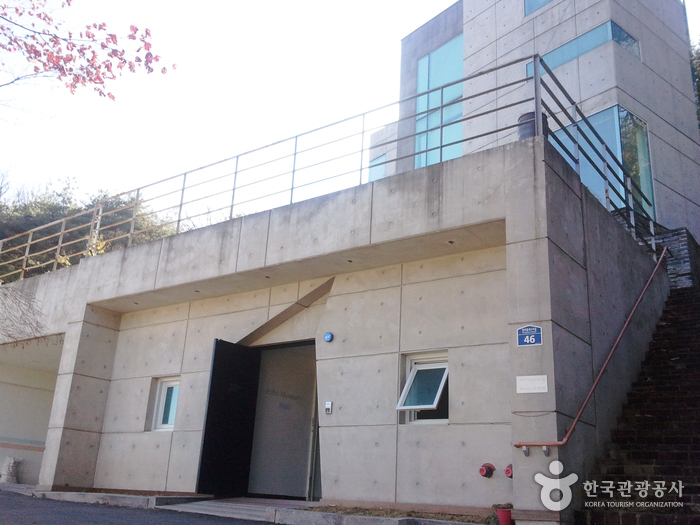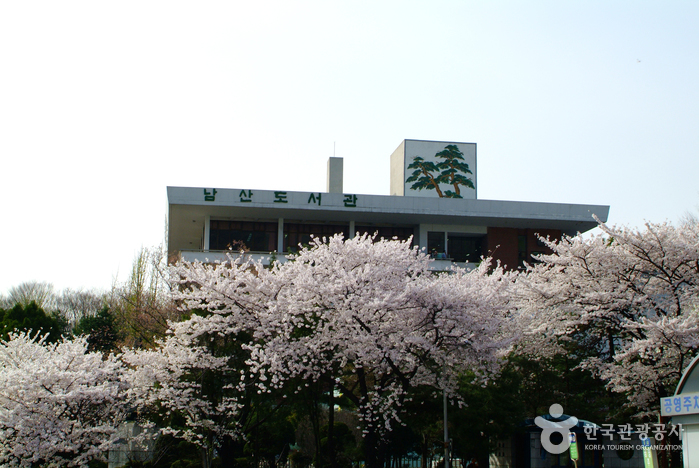Ralph Lauren Korea - Lotte Main Branch [Tax Refund Shop] (랄프로렌코리아 롯데지점)
4.1Km 2024-04-19
81, Namdaemun-ro, Jung-gu, Seoul
-
World Top Pharmacy - Lotte Main Branch [Tax Refund Shop] (월드탑약국 롯데본점)
4.1Km 2024-04-16
9F, 81, Namdaemun-ro, Jung-gu, Seoul
-
Lucenlee - Lotte Main Branch [Tax Refund Shop] (루첸리 롯데본점)
4.1Km 2024-06-26
81, Namdaemun-ro, Jung-gu, Seoul
-
Zaha Museum (자하미술관)
4.1Km 2021-03-09
46, Changuimun-ro 5ga-gil, Jongno-gu, Seoul
+82-2-395-3222
Located in Buam-dong, Jongno-gu, Zaha Museum is the highest art gallery in Seoul. Reaching
the museum involves a bit of an uphill walk, but the breathtaking scenery that includes Bugaksan Mountain and Inwangsan Mountain makes it worth the effort.
Opened on March 1, 2008, the two-story museum exhibits experimental works of young artists. There are two exhibition halls and a small garden on the second floor with a great view of the mountains.
Namsan Library (서울특별시교육청 남산도서관)
4.1Km 2021-07-07
109, Sowol-ro, Yongsan-gu, Seoul
+82-2-754-7338
Namsan Library opened as Kyeongseong Prefectural Library in 1922 as a public library in Myeong-dong, Jung-gu, Seoul. The library was moved to the current site in 1964 with a newly built building and its name changed to Namsan Library in 1965. This concrete building was built in 1964 and was designed by architect Lee Haeseong. It was designated as Seoul Future Heritage in 2013, credited for its preservation value.
It is comprised of 19 rooms and educational areas including the Humanity and Social Science Hall, Nature Science Hall, Language and Literature Hall, Electronic Information Room and more. Since opening, the library has collected nearly 500,000 books, 16,000 non-book materials, 700 continuing resources, and other special materials like old books, oriental books (including Japanese books), and more. Namsan Library also operates a reading treatment program unique to this library that began in 2005. The program includes remodeling of reading consultation room, training for people in charge of reading treatment, workshops, programs for individuals and groups. Also, various exhibitions, lectures, shows, cultural classes and other events are available all year long to enhance lifelong education.
Mijin (미진)
4.1Km 2024-03-06
19 Jong-ro, Jongno-gu, Seoul
+82-2-732-1954
Mijin is a Korean-style cold buckwheat noodle restaurant located near Gwanghwamun, specializing in Korean-style naeng memilguksu (cold buckwheat noodles). They offer a broth that is richer in flavor compared to Japanese soba bonito soy sauce, along with chewier buckwheat noodles. The restaurant produces the broth and noodles in-house and serves them directly to customers. The cold broth and buckwheat noodles condiments can be adjusted according to preference. Another popular menu is the memil jeonbyeong (buckwheat crepe) filled with bean sprouts, bean curd, aged kimchi, and ground pork.
Gwanghwamun Gate (광화문)
4.1Km 2024-12-04
161 Sajik-ro, Jongno-gu, Seoul
+82-2-3700-3900
Built in 1395 under the reign of King Taejo, the first king of the Joseon dynasty, Gwanghwamun Gate is the southern gate of Gyeongbokgung Palace. It is also the main gate of the palace, therefore larger and fancier in comparison to the other gates. Gwanghwamun Gate consists of three arched gates; the center gate was used by the king, while the other two were used by the crown prince and royal officials. The tall granite walls of the gate serve as a platform for the wooden gate tower that watches over the city. The gate has a sign with its name written at the top center of the gate tower.
Gwanghwamun Gate went through several damages and restorations over the course of history. It was first severely damaged during the Imjin War (1592-1598) and was not restored until the reconstruction of Gyeongbokgung Palace in 1864. Under the Japanese administration, the gate was demolished and relocated to the north of the palace's eastern gate, followed by series of damages during the Korean War (1950-1953). In 1968, Gwanghwamun Gate was relocated back to the south of the palace and was rebuilt using concrete; however, the gate’s position was shifted a few meters away from its original location. In 2006, a major reconstruction project took place to restore Gwanghwamun Gate to its original state and location, disassembling the structure completely and replacing concrete with granite and wood. After three years and eight months of construction, Gwanghwamun Gate was fully restored to its original form and was open to the public on August 15, 2010.
Wecle - Yeouido Branch [Tax Refund Shop] (위클 여의도)
4.1Km 2024-04-18
Store #B119, B1 (Yeouido-dong), 16, Gukjegeumyung-ro 8-gil, Yeongdeungpo-gu, Seoul
-
Olive Young - Jongno 1(il)-ga Branch [Tax Refund Shop] (올리브영 종로1가)
4.1Km 2024-04-16
19, Jong-ro, Jongno-gu, Seoul
-
![Ralph Lauren Korea - Lotte Main Branch [Tax Refund Shop] (랄프로렌코리아 롯데지점)](http://tong.visitkorea.or.kr/cms/resource/26/2887926_image2_1.jpg)
![World Top Pharmacy - Lotte Main Branch [Tax Refund Shop] (월드탑약국 롯데본점)](http://tong.visitkorea.or.kr/cms/resource/35/2887935_image2_1.jpg)
![Lucenlee - Lotte Main Branch [Tax Refund Shop] (루첸리 롯데본점)](http://tong.visitkorea.or.kr/cms/resource/29/3313629_image2_1.jpg)




![Olive Young - Jongno 1(il)-ga Branch [Tax Refund Shop] (올리브영 종로1가)](http://tong.visitkorea.or.kr/cms/resource/16/2878216_image2_1.jpg)
 English
English
 한국어
한국어 日本語
日本語 中文(简体)
中文(简体) Deutsch
Deutsch Français
Français Español
Español Русский
Русский